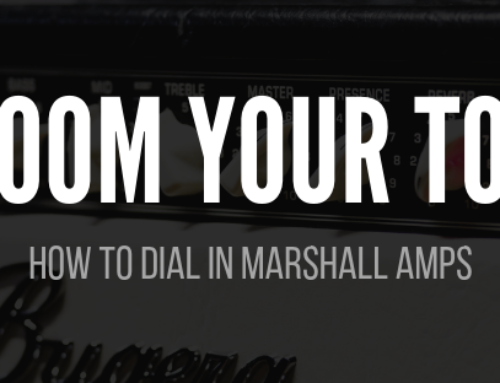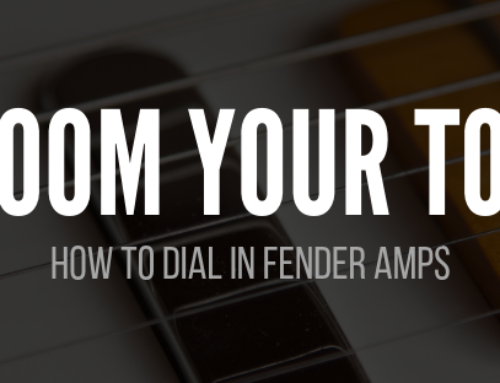Finding YOUR Tone
As guitarists, we are all searching for our sound, but sometimes finding that sound can be elusive. Whether we have to work with a backline that we are not used to, or we are trying to learn how to use a new shiny new toy that we haven’t told the wife about yet, it is important to know how to get YOUR sound out of an amp.
Today, I wanted to talk about the amp of choice for many church musicians as well as U2’s The Edge, Vox amps (The AC series in particular). These amps have a unique characteristic bite to them if you can crank them loud enough, but many people like to run them clean. Some “experts” claim that they don’t work well with pedals, but don’t let the people on Gearslutz tell you how to find YOUR tone.
How Does The Tone Stack Work?
One thing that stands in the way of people and finding their sound is realizing how the tone stack on different amps work. Vox amps are no exception here! Most people believe that “all eq’s at noon” on an amp means that your tone is “flat” (or unaltered). This is not the case for most amps. Let me prove it to you, and show you what it takes to find your sound on a Vox Amp.
Finding the Bassline
In order to find our tone we need a bassline. Let’s call our bassline a “flat” frequency response. This allows us to hear the guitar tone least affected by the circuitry, and begin to make changes from there. Although “flat” does not mean that it sounds the best, it is a good starting point in order to make changes.
Like I said before, many people believe that “all eq’s at noon” is flat, and let me show you why that’s not true. Below is the Duncan Tone Stack Calculator. With a everything at noon, there is a pretty hefty bass and treble bump. Not that this is a bad tone, it just isn’t a good bassline for reference.
The way that a Vox amp is designed, the tone tone stack is flattest when Bass is at 0, and the Treble is at 0. You will notice that there is about a couple db of gain lost, so you will have to turn up your volume a little to compensate (it is important to level match when making eq decisions). Who doesn’t love an excuse to turn their guitar up anyways? This may not be the best sounding setting on your amp, but you will be able to hear the amp’s unaltered tone, and adjust from there.
One thing to keep in mind on a Vox amp is that the more that you increase the Bass and Treble, the greater effect it has on the mids (Pictured Below). For instance when you dime the Bass and Treble, there is a pretty ugly notch filtering going on at about 500 hz. Keep in mind that eq controls are not isolated, but are rather interactive with each other, so experiment with it.
Find YOUR Sound
Now that you know where the bassline is, you can manipulate it to suit your tonal needs, enabling you to find YOUR unique sound. Have fun and try out new settings! Now that you have a better understanding of how your amp works, you can find new life and inspiration in the gear that you already have!
I hope this was helpful in equipping you to find YOUR sound! If you found this article helpful, please follow Moustache Audio on social media, and take a look at our products here on our website.
At Moustache Audio, we build gear that allows you to dial in something unique to fit your personal playing style. We want to help you groom your tone, and shape it into the masterpiece that you have always dreamed of.







Thanks man,
You’ve done a great favor for my neighbors.
And my back.
And my FUCKIN NECK !
And my fuckin roommates who are assholes btw